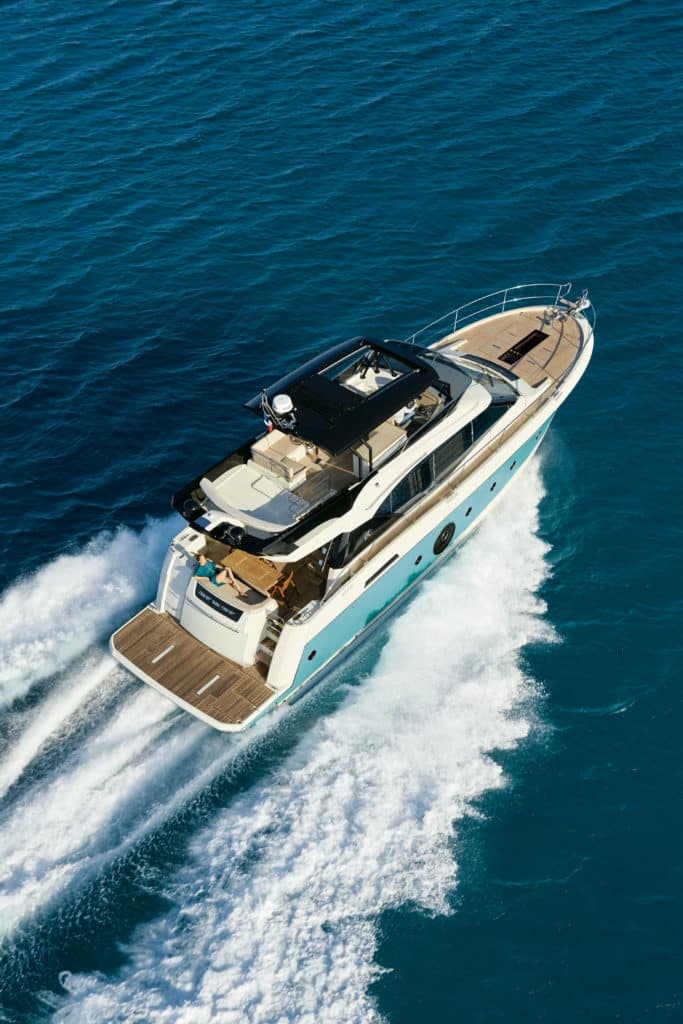
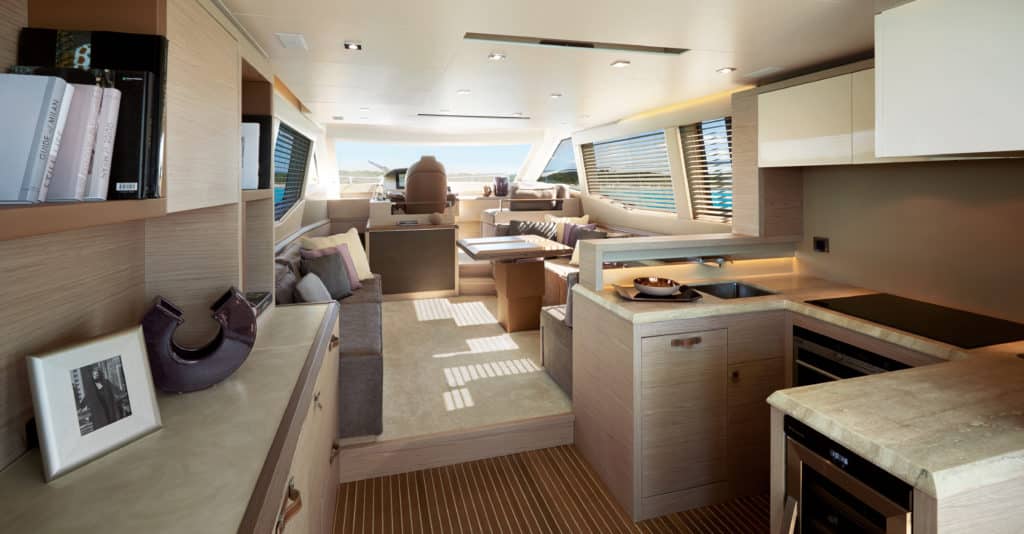
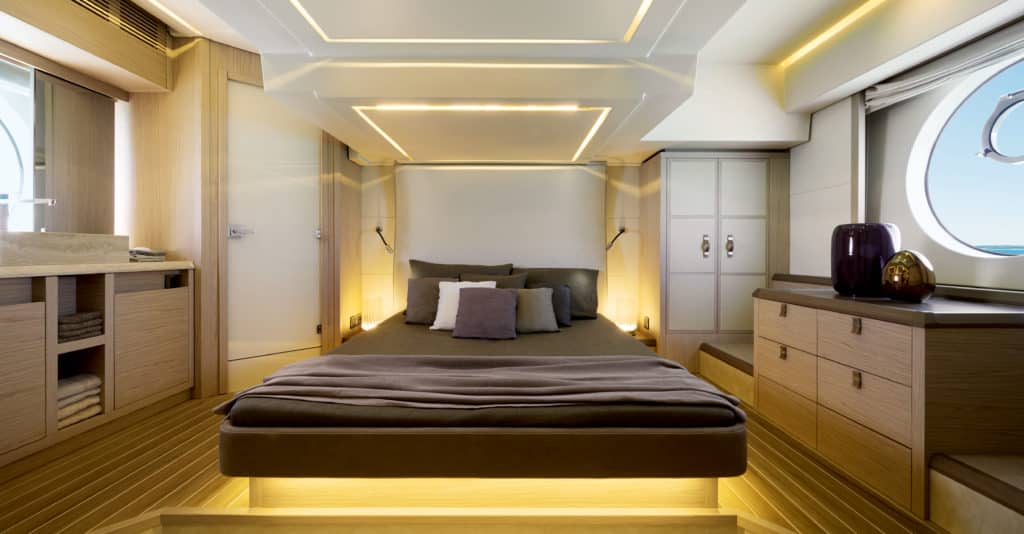
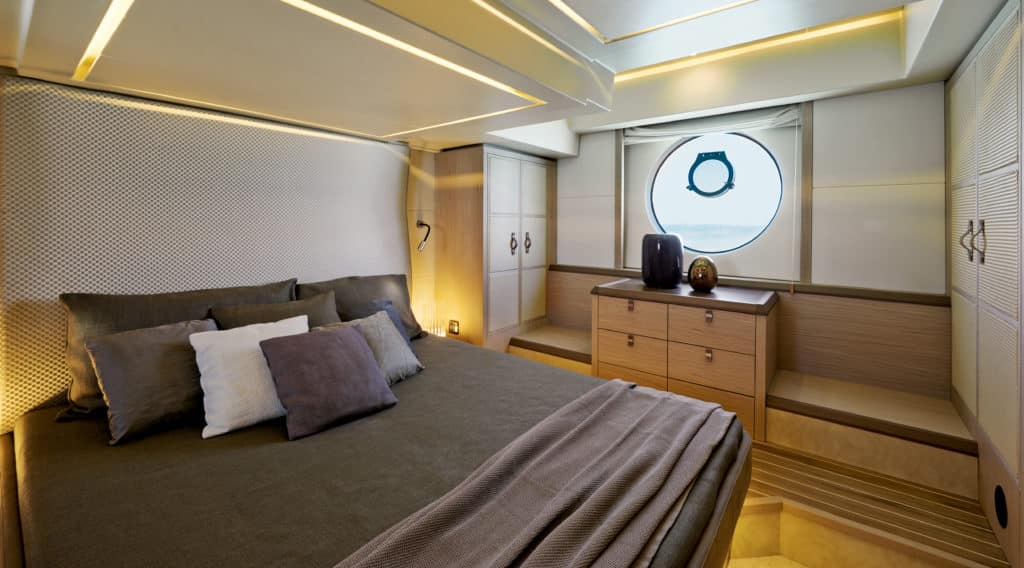
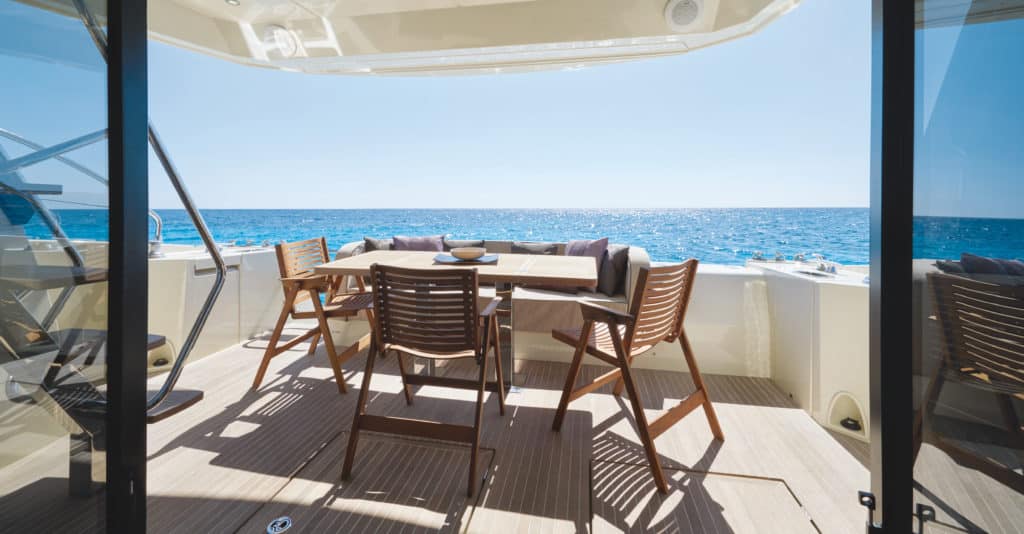
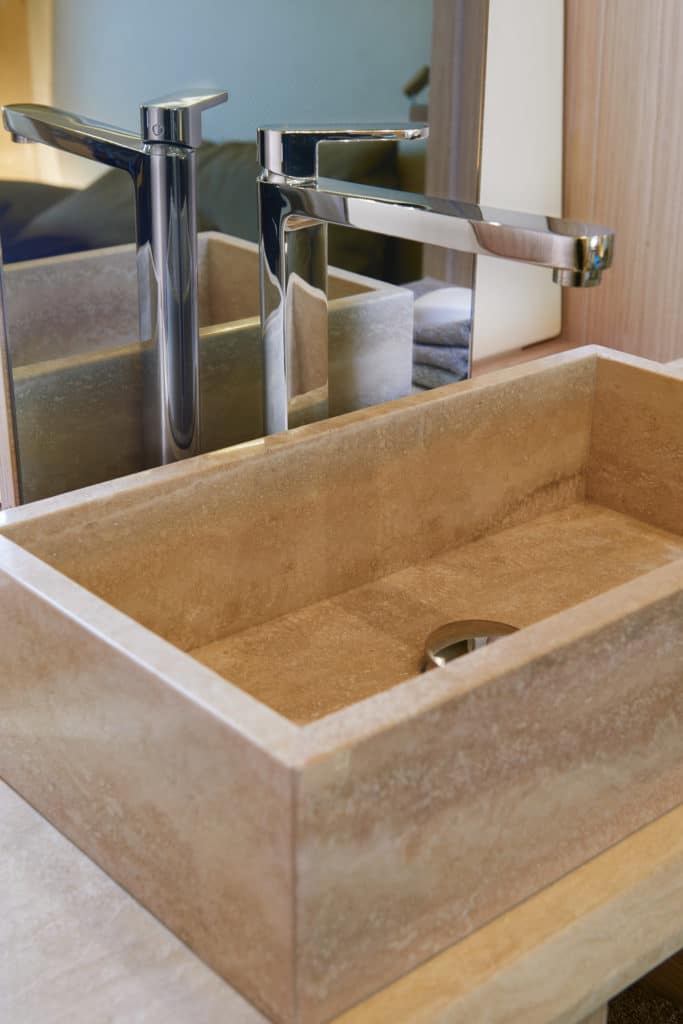
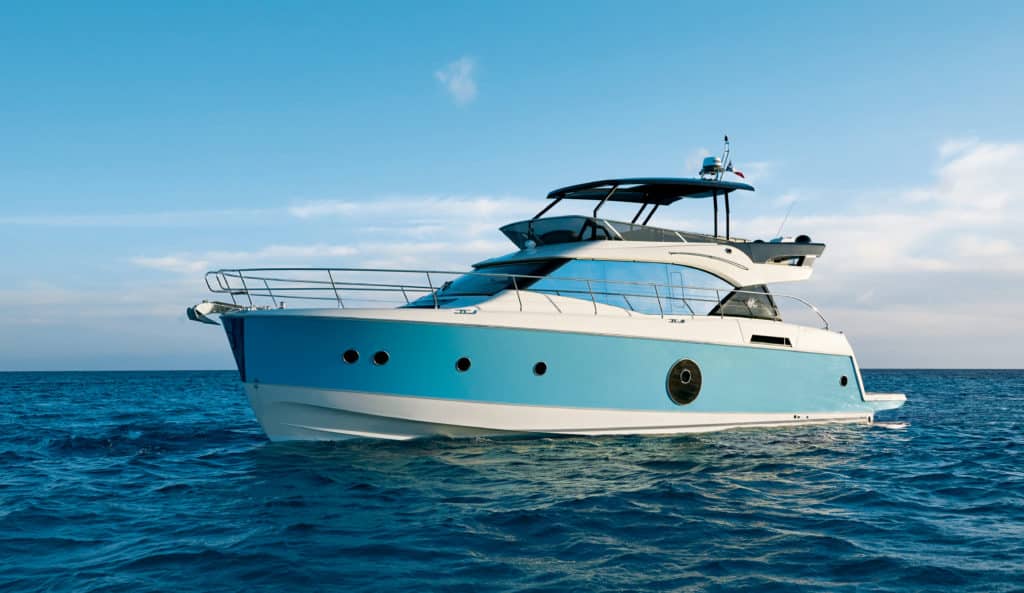
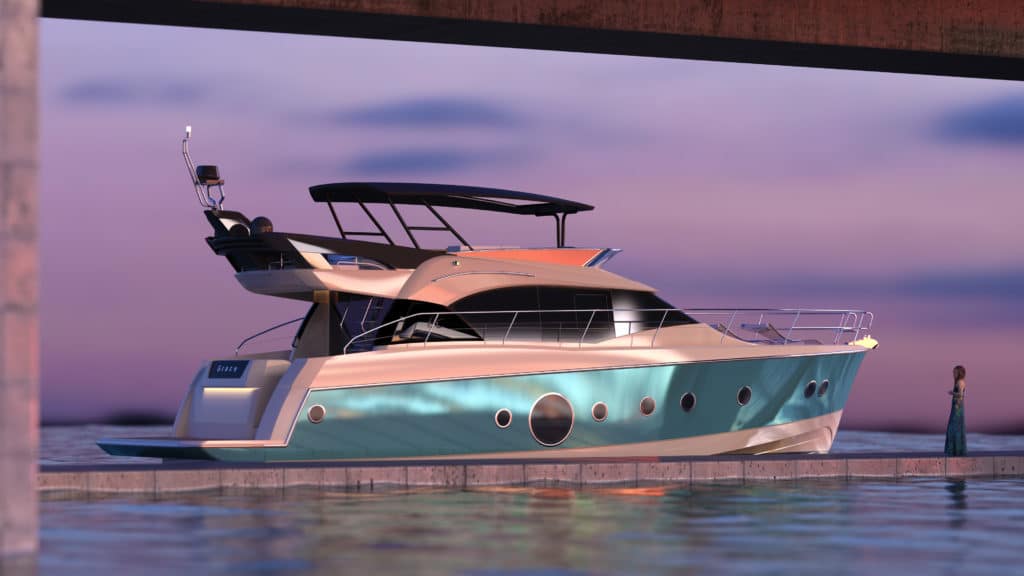
Are you an iPhone or a Blackberry user? Mercedes or BMW? Rolex or Omega? Brands. They’re the standard-bearer of the 21st century, particularly among premium products, tapping deep into our tribal cortex and engendering the kind of loyalty once reserved for baseball teams. After all, to admit that the competition is better than “our” brand is to admit that we were wrong in our purchase — and none of us are ever wrong.
Big business intuitively understands this phenomenon. Companies know that if they can wrap a customer up in brand identity, they’ll have an easier sell than anyone else when it’s time to upgrade. If you have an iPhone 5, naturally your next phone will be an iPhone 6.
In the world of the premium product, however, brand elasticity stretches only so far. And it’s for that reason that Beneteau created the Monte Carlo brand. The company wanted to keep the loyalty felt by thousands of Antares, Flyer and Gran Turismo owners with a separate prestigious marque that allows them to remain within the extended family.
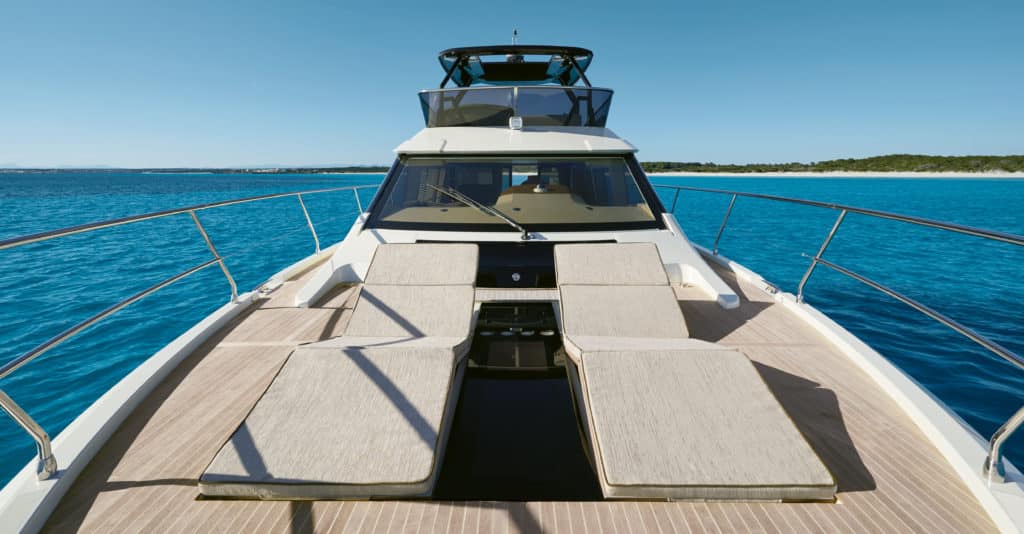
The first of this new breed was the 50-foot MC5, launched at the Düsseldorf Boat Show in 2013. From the get-go, it was clear that the builder was keen to distance this marque from everything else in the fiercely competitive 50-foot flybridge sector. With a distinctive cream and teal color scheme, bolt upright stainless-steel-trimmed stem and circular hull windows, the MC5 was in no danger of being mistaken for another brand. The 45-foot MC4 followed last year, with her “mini me” look, and this year the range has expanded upward with the 60-foot MC6.
As you’d expect, the appearance is pure MC. All the styling cues, from that upright stem proudly bearing the MC designer label to the distinctive color scheme, are present and correct.
On board, the styling is elegant, contemporary and almost minimalist inside and out. Side decks from the aft cockpit are wide, safe and easily accessed, and they lead to a teak foredeck with a couple of surprises. The black panel just forward of the windscreen lifts to reveal two small panels. These operate what look like large, square foredeck hatches but are in fact adjustable loungers with remote controls. The feature transforms this space into a superb spot to catch some rays or read a book.
Like her sisterships, the MC6 has a vast flybridge. Guests may lounge on the sun pad aft or relax at the dinette opposite the bar. The carbon-fiber-framed helm seat has space for a couple of crew members, with a bench alongside. Our test boat had the optional flybridge Bimini top in black, which integrated well with the design of the boat.
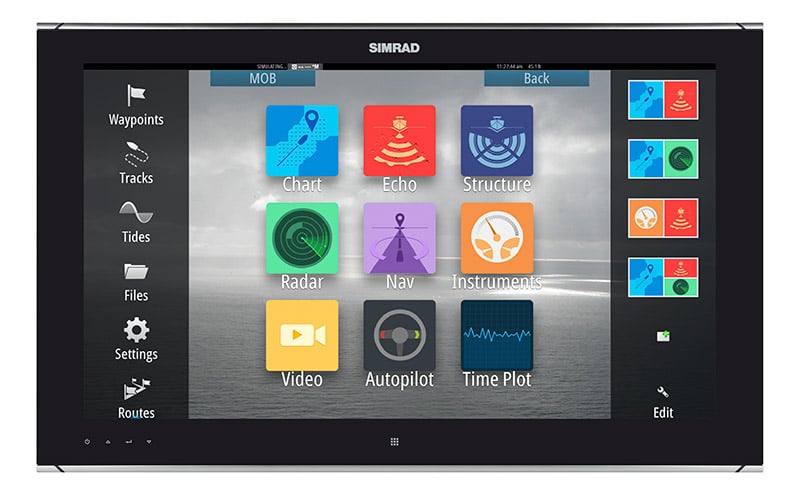
Inside, the minimalist theme continues. The builder placed the galley aft, and it’s a great spot for catering to the salon or cockpit, as well as ideal for those parties that inevitably end up in the galley.
Forward of the galley is a salon with a helm that wouldn’t look out of place on the starship Enterprise. The captain enjoys an armchair with a joystick that controls the Cummins Zeus pod-drive engines. A built-in tracker ball on the armchair interfaces with the 24-inch Simrad navigation screen.
Belowdecks, the layout follows the classic VIP double forward, twin berth guest cabin to starboard and full-beam master cabin aft. All cabins are en suite (the third cabin by accessing the day-head) and provide plenty of stowage for cruising enthusiasts, as well as sizable floor space. The master cabin splits the toilet and shower into separate units in each corner of the starboard side.
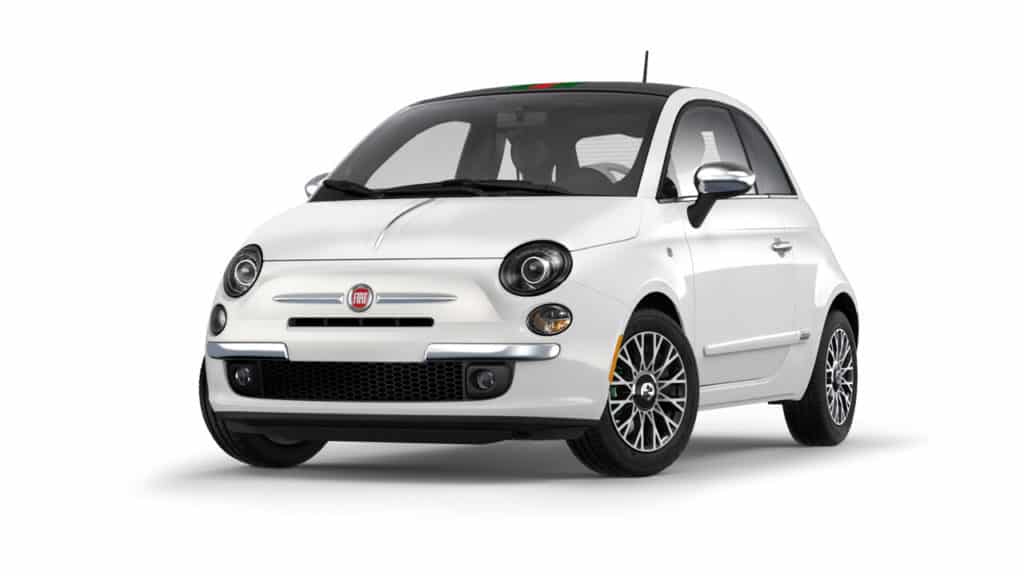
Speaking of trading floor space, there’s an intriguing layout available for the Asian market. Asian owners rarely sleep on board or cruise, but instead use their boats for entertaining. So, the guest cabin and forward VIP are stripped out in favor of a dinette in the bow and a galley to starboard. The salon is then extended aft, and the upper galley becomes a smaller bar area. The boat ends up being a single-cabin 60-footer. A brave choice, and the ultimate party pad.
Beneteau offers one engine option for the MC6: a pair of 600-horsepower Cummins QSC 8.3 Zeus diesels. All the usual pod-drive advantages come with it, including vibration-free running, joystick maneuverability and immediate response to the helm. With this power configuration, the MC6 is quiet. Even at wide-open throttle, the sound meter on our test boat didn’t pass 75 dbA at the lower helm (65 decibels is the level of normal conversation). These motors offer a top speed of 28 knots at a fraction over 3,000 rpm. Running the engines at 2,750 rpm equates to a 24-knot cruise, while throttling back to 2,500 rpm reduces speed to 18 knots.
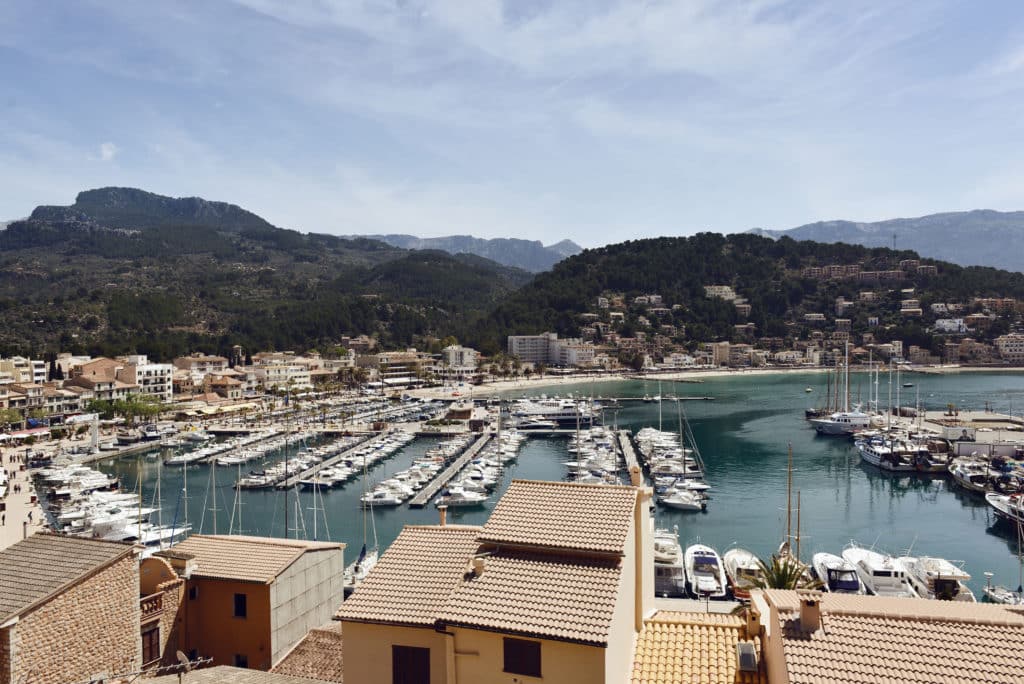
The MC6 proves a worthy addition to the Monte Carlo family, offering an interesting and stylish alternative to mainstream 60-footers without sacrificing practicality or usability. For the builder, she adds another layer, allowing the brand faithful to stay within the burgeoning family. IPhone5? MC5? IPhone6? MC6? Hmm.








